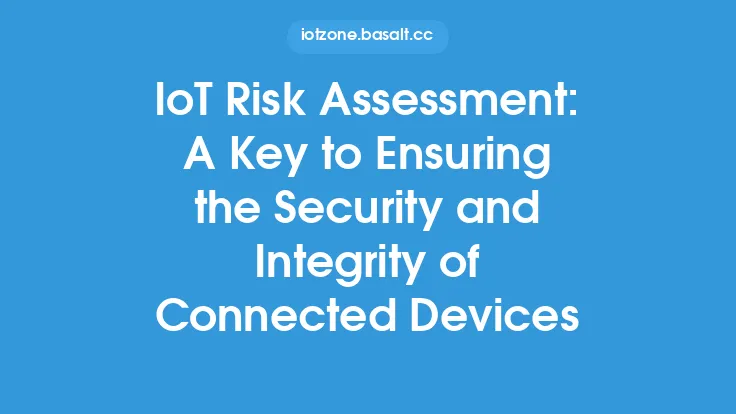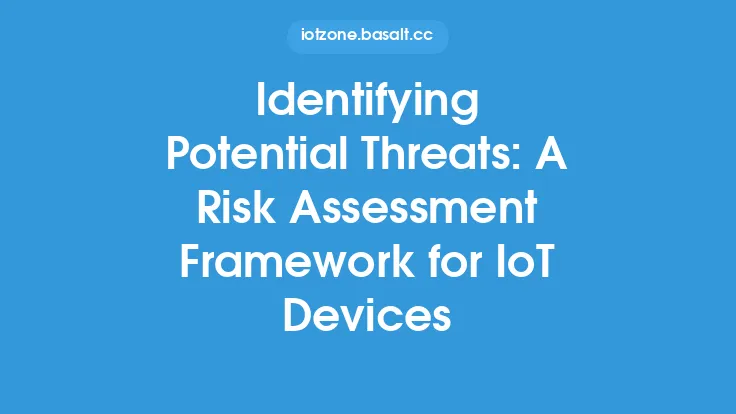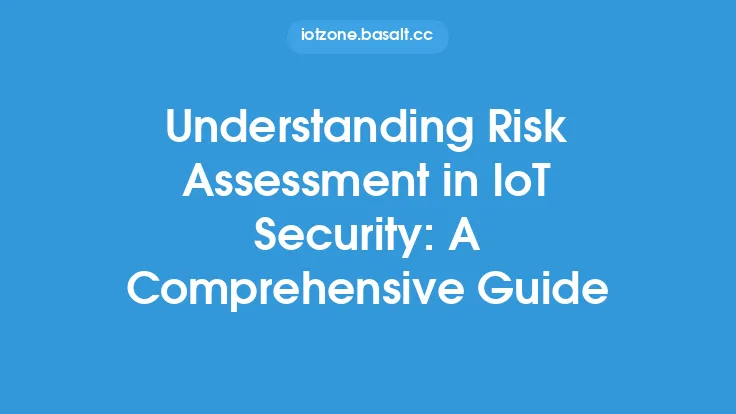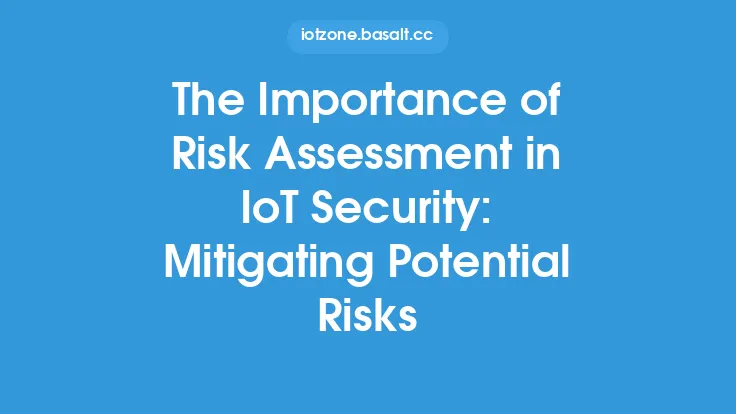When it comes to the Internet of Things (IoT), risk assessment is a critical component of ensuring the security and integrity of connected devices. With the increasing number of IoT devices being deployed, the potential attack surface is expanding, making it essential to evaluate and prioritize risks. In this article, we will provide a step-by-step approach to IoT risk assessment, focusing on the key aspects of evaluating and prioritizing risks.
Introduction to IoT Risk Assessment
IoT risk assessment is the process of identifying, evaluating, and prioritizing potential risks associated with IoT devices and systems. It involves analyzing the potential vulnerabilities and threats that could impact the confidentiality, integrity, and availability of IoT data and systems. The goal of IoT risk assessment is to identify potential risks and prioritize them based on their likelihood and potential impact, allowing organizations to take proactive measures to mitigate or manage these risks.
Identifying Potential Risks
The first step in IoT risk assessment is to identify potential risks. This involves analyzing the IoT system or device, including its hardware, software, and network components. Potential risks may include:
- Hardware vulnerabilities, such as buffer overflows or firmware flaws
- Software vulnerabilities, such as SQL injection or cross-site scripting (XSS)
- Network vulnerabilities, such as weak passwords or unencrypted communication
- Physical vulnerabilities, such as tampering or unauthorized access
- Data vulnerabilities, such as unauthorized access or data breaches
Evaluating Risks
Once potential risks have been identified, the next step is to evaluate them. This involves analyzing the likelihood and potential impact of each risk. The likelihood of a risk is determined by the probability of the risk occurring, while the potential impact is determined by the potential consequences of the risk. Risks can be evaluated using a risk matrix, which categorizes risks based on their likelihood and potential impact.
Prioritizing Risks
After evaluating risks, the next step is to prioritize them. This involves ranking risks based on their likelihood and potential impact, allowing organizations to focus on the most critical risks first. Risks can be prioritized using a risk prioritization framework, which considers factors such as the potential impact, likelihood, and feasibility of mitigation.
Conducting a Threat Analysis
A threat analysis is a critical component of IoT risk assessment. It involves identifying potential threats, such as malicious actors or natural disasters, and evaluating their potential impact on the IoT system or device. Threats can be categorized into different types, including:
- Insider threats, such as unauthorized access or data breaches
- Outsider threats, such as hacking or malware
- Environmental threats, such as natural disasters or power outages
- Physical threats, such as tampering or unauthorized access
Assessing Vulnerabilities
Vulnerability assessment is another critical component of IoT risk assessment. It involves identifying potential vulnerabilities in the IoT system or device, including hardware, software, and network vulnerabilities. Vulnerabilities can be assessed using various tools and techniques, including:
- Penetration testing, which involves simulating a cyber attack to identify vulnerabilities
- Vulnerability scanning, which involves using automated tools to identify vulnerabilities
- Code review, which involves reviewing the source code of the IoT system or device to identify vulnerabilities
Developing a Risk Mitigation Plan
After identifying, evaluating, and prioritizing risks, the next step is to develop a risk mitigation plan. This involves identifying measures to mitigate or manage risks, such as:
- Implementing security controls, such as firewalls or intrusion detection systems
- Conducting regular security audits and vulnerability assessments
- Developing incident response plans to respond to security incidents
- Providing security awareness training to employees and users
Implementing Risk Mitigation Measures
The final step in IoT risk assessment is to implement risk mitigation measures. This involves putting in place the measures identified in the risk mitigation plan, such as security controls, security audits, and incident response plans. It also involves continuously monitoring and evaluating the effectiveness of these measures, making adjustments as needed to ensure the security and integrity of the IoT system or device.
Continuous Monitoring and Evaluation
IoT risk assessment is an ongoing process that requires continuous monitoring and evaluation. This involves regularly reviewing and updating the risk assessment to ensure that it remains relevant and effective. It also involves continuously monitoring the IoT system or device for potential security incidents, making adjustments to the risk mitigation plan as needed to ensure the security and integrity of the system or device.
Best Practices for IoT Risk Assessment
There are several best practices that organizations can follow to ensure effective IoT risk assessment, including:
- Conducting regular risk assessments to identify and prioritize potential risks
- Implementing a risk mitigation plan to mitigate or manage risks
- Continuously monitoring and evaluating the effectiveness of risk mitigation measures
- Providing security awareness training to employees and users
- Staying up-to-date with the latest security threats and vulnerabilities
Conclusion
IoT risk assessment is a critical component of ensuring the security and integrity of connected devices. By following a step-by-step approach to IoT risk assessment, organizations can identify, evaluate, and prioritize potential risks, taking proactive measures to mitigate or manage these risks. It is essential to continuously monitor and evaluate the effectiveness of risk mitigation measures, making adjustments as needed to ensure the security and integrity of the IoT system or device. By following best practices and staying up-to-date with the latest security threats and vulnerabilities, organizations can ensure the security and integrity of their IoT systems and devices.





